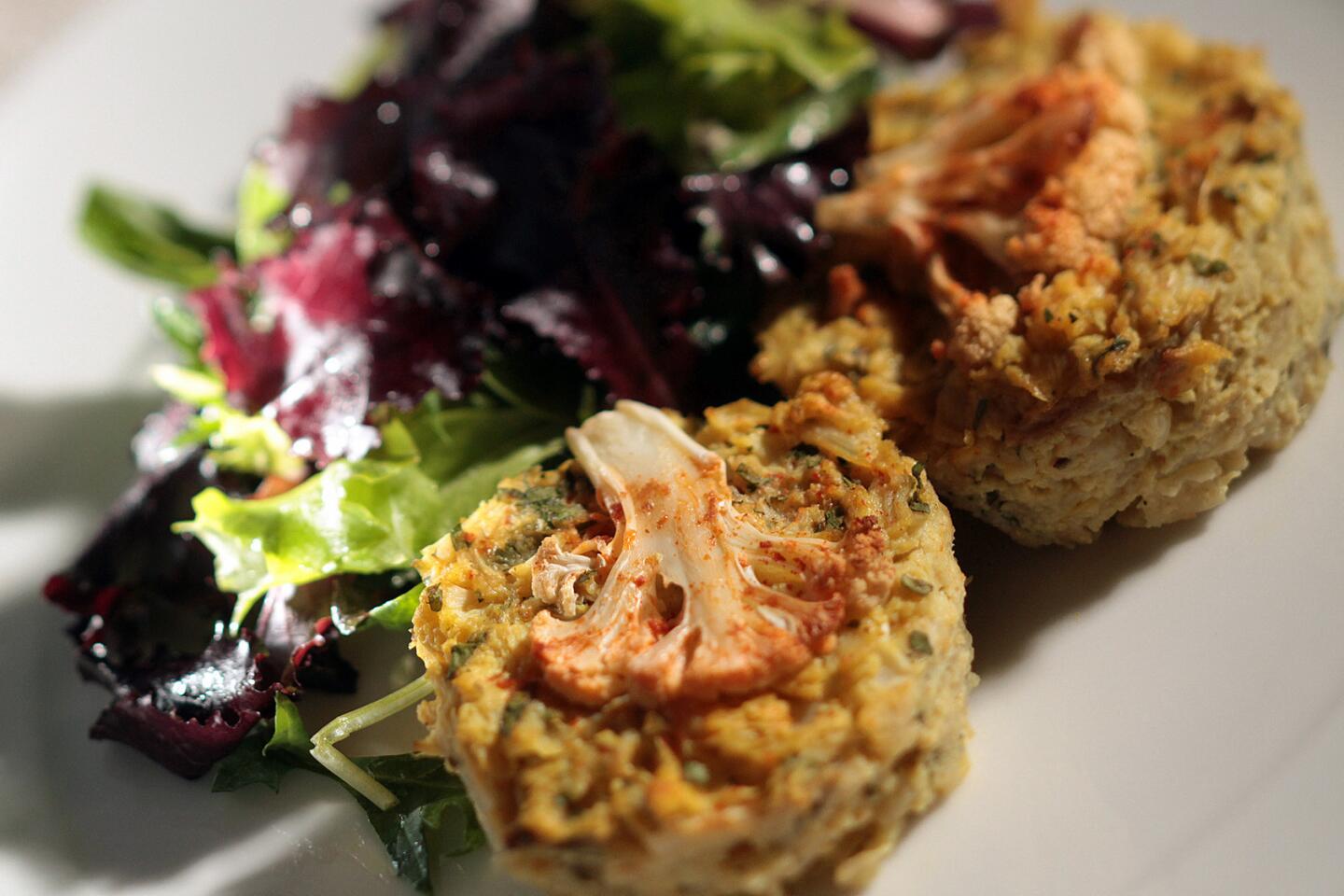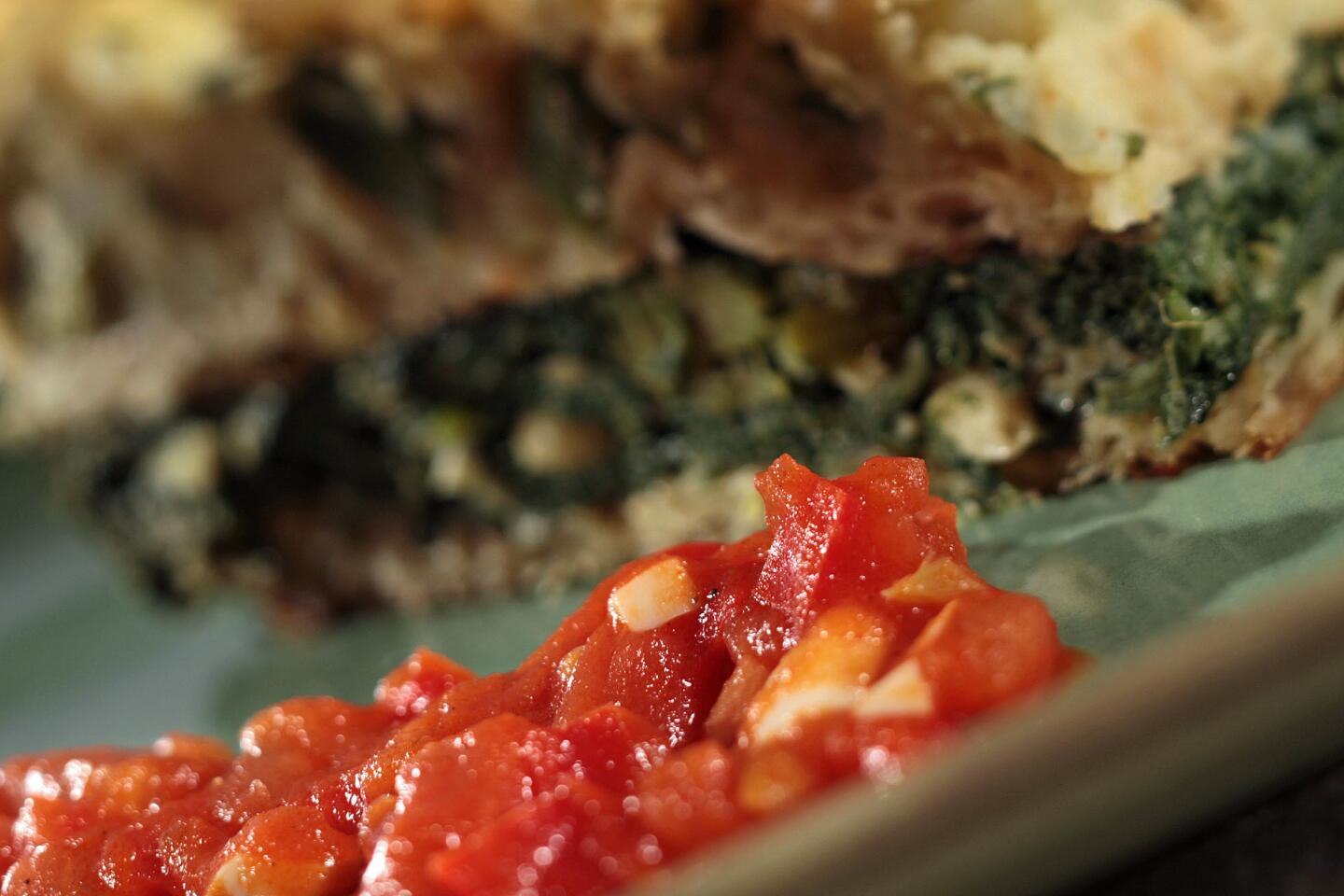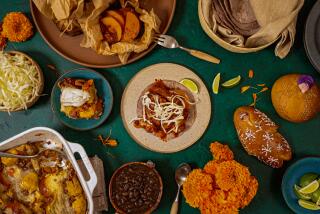For Passover, so many ways to kugel
What really makes the meals of Passover, which begins this year on Monday at sundown, different? It may not be what you think.
The simple answer is found in Exodus 13:6-7: “For seven days you must eat matzos (unleavened bread).... No chametz or leaven (starter dough) should be seen anywhere in your territory.”
But it’s more complicated than that. Often chametz is translated as leavening, yeast or fermented food, but Rabbi Gil Marks, the author of “Encyclopedia of Jewish Food,” says that this is inaccurate. Yeast is used in making wine, and cheese is a fermented food, yet both are permitted on Passover. Pasta made from wheat is not a leavened food, but it is chametz. The correct definition of chametz, writes Marks, is degradation — the result of “enzymes breaking down starch in the presence of water into complex sugars and simple sugars.”
The Talmud specifies that five grains can become chametz when exposed to water. These grains are suitable for making matzo, but any other use of them on Passover is forbidden. In the past, the list was translated as wheat, barley, spelt, oats and rye. Modern scholars have revised the translation because oats and rye were not grown in the Middle East in biblical times. According to Marks, the grains on the list are einkorn, emmer, durum wheat and two kinds of barley.
Besides replacing the customary challah by a plate of matzos, there’s another major difference in Passover meals. Many foods used to prepare satisfying side dishes are excluded.
The reason? Over the centuries, Ashkenazi rabbis extended the list of foods prohibited on Passover to include all grains and legumes, because wheat grains might have been inadvertently mixed in during packing. (Some rabbis now allow quinoa.) Various restrictions regarding grains and legumes were adopted in some Sephardi communities too. Certain Sephardim abstain from eating rice and beans, especially garbanzo beans, because the word for them in Hebrew — hummus — sounds like chametz. On the other hand, North African Jews use fresh legumes, such as green fava beans, in traditional Passover dishes.
The challenge for observant Jewish cooks is to prepare filling Passover meals without most of the usual carbs: bread, grains and legumes. This might seem almost like menu planning for the paleo diet, but there’s a perk: Matzo is allowed.
On its own, matzo might seem uninspiring, but Jewish cooks use it to create a variety of tasty Passover side dishes and entrees. Most of them are combinations of matzo, eggs and vegetables baked as casseroles or sautéed as cakes. Some are flavored with ground meat or, for meatless meals, enriched with cheese or yogurt. They’re at their best when they have generous amounts of flavorings, such as sautéed onions, garlic, herbs and seasonings, and just enough matzo or matzo meal to give them structure. To American Jews, most of whom are Ashkenazim, matzo kugel is the most familiar example of such dishes.
Growing up in an Ashkenazi home, I always looked forward to my mother’s matzo kugels. She made them like her noodle kugels, substituting moistened matzo or farfel (chopped matzo) for the noodles and mixing it with eggs. For savory kugels, she added sautéed onions and mushrooms, and for sweet ones, apples and cinnamon. We often flavor savory kugels, such as our Passover cauliflower kugelettes, with Middle Eastern spices and serve them with green salads.
A popular Sephardi Passover dish, mina, sometimes called matzo lasagna, is made of whole matzos layered with green vegetables, meat or cheese and enriched with olive oil. Sephardim also make fritada, a casserole of grated or mashed vegetables baked with eggs and matzo meal until it’s firm enough to be cut. Jews of Greek origin bake Passover spanakopita from sautéed chopped spinach, dill and green onions mixed with matzo meal, eggs and lemon juice and layered with matzos sprinkled with olive oil. To make sfoungato, they add lamb to a similar sauté of greens and bake the casserole with a matzo meal crust. In Israel, these kinds of sliceable casseroles are often called pashtidot.
The paradox of Passover is that, in spite of the restrictions, there are so many delicious dishes that the eight days of the holiday, as it is celebrated outside Israel, are not enough to enjoy them all.
Levy is the author of “1,000 Jewish Recipes” and “Jewish Cooking for Dummies.”
More to Read
Eat your way across L.A.
Get our weekly Tasting Notes newsletter for reviews, news and more.
You may occasionally receive promotional content from the Los Angeles Times.













